Obsidian is a fascinating gem that comes from cooled lava. Imagine, it’s like wearing a piece of a volcano! But here’s a challenge: many other shiny rocks can look like this natural wonder. So, how do you know if you’ve got the real thing or a poser?
In the world of gems, looks can be deceiving, and it’s easy to be fooled by imitations. That’s where we come in! We’ve got some neat tricks to help you how to identify obsidian and how to tell if an obsidian is real.
We’ll share easy-to-follow tips that’ll help you spot genuine finds. No need for fancy tools or big words. By the time you finish reading, you’ll know the difference between real vs fake obsidian, even if you’re not a rock expert.
Overview Of Natural Obsidian And Why Fakes Are Common

Picture this: deep inside the Earth, there’s melted rock called magma. Sometimes, this magma pushes its way up and spills out of a volcano. When this happens and the molten rock quickly cools down, it can turn into obsidian.
One of the coolest things about this gem is how it looks. Unlike most rocks, obsidian is glassy and smooth. This glass-like appearance is because obsidian doesn’t have the time to form crystals as it cools down super fast.
It’s often black, but it can have streaks of other colors like green, brown, or even shiny gold and silver.
The value of obsidian is dictated by its beauty and the way it can be shaped and used. Certain types of obsidian, like the ones with pretty patterns or colors, can be rarer and thus more valuable.
If you hit obsidian in a certain way, it can break into pieces with super sharp edges— even sharper than a surgeon’s scalpel! Because of this, ancient humans used obsidian to make tools and weapons like knives, arrowheads, and spears.
But that’s not all. Obsidian has played a big part in art and jewelry, too. People have carved it into statues, used it in mosaics, or turned it into beautiful jewelry. In some cultures, it was believed to protect the person wearing it from evil.
Why you’re seeing more fake obsidian these days
Obsidian is a pretty popular gem because of its unique look and cool origin story (remember, it comes from volcanoes!). Check out our article on where obsidian is found if you want to mine for your own gem.
Here’s the thing, though: when something gets popular, there are always folks who want to make a quick buck. So, they create stuff that looks like the real deal but isn’t.
These fake obsidians are often cheaper to produce and can be sold to unsuspecting buyers for the price of real obsidian. Some are just regular glass dyed black, while others are different types of stones that look somewhat like obsidian.
The rise of online shopping makes it even easier for these fakes to get into people’s hands. Buyers can’t always see or touch the stone before buying, making it tricky to tell real from fake. The more people want obsidian, the more fakes pop up.
How To Identify Real Obsidian
Rock identification is no easy feat, especially if you’re dealing with a specimen that’s potentially an obsidian. With a rock that has many look-alikes and wannabes, obsidian is pretty challenging to identify if you don’t have handy tips to do so.
Here are some practical ways you can tell between a real obsidian and a fake obsidian. Don’t worry, it wouldn’t take a rock expert to do these simple tests:
Observe for glassy appearance and consistent color

The looks of a rock can aid you on how to identify if it’s an obsidian. First up: the glassy appearance. Obsidian forms when lava from a volcano cools down super quickly— so fast that it doesn’t have time to form tiny bits called crystals.
That’s why it looks smooth, just like a piece of glass. If the stone you’re checking out is grainy or looks like it has a bunch of tiny crystals inside, it’s likely not genuine obsidian.
Next, let’s talk about its color. Genuine obsidian is mostly deep black. Sometimes, it can have small streaks or bits of other colors, but overall, the color should be pretty even.
If you see large patches of different colors or if the stone isn’t mostly black, then you might want to think twice.
Observing for that sleek, glass-like surface and consistent black color can give you a good hint about whether you’ve got a real piece of obsidian in your hands or not.
Look for sharp edges
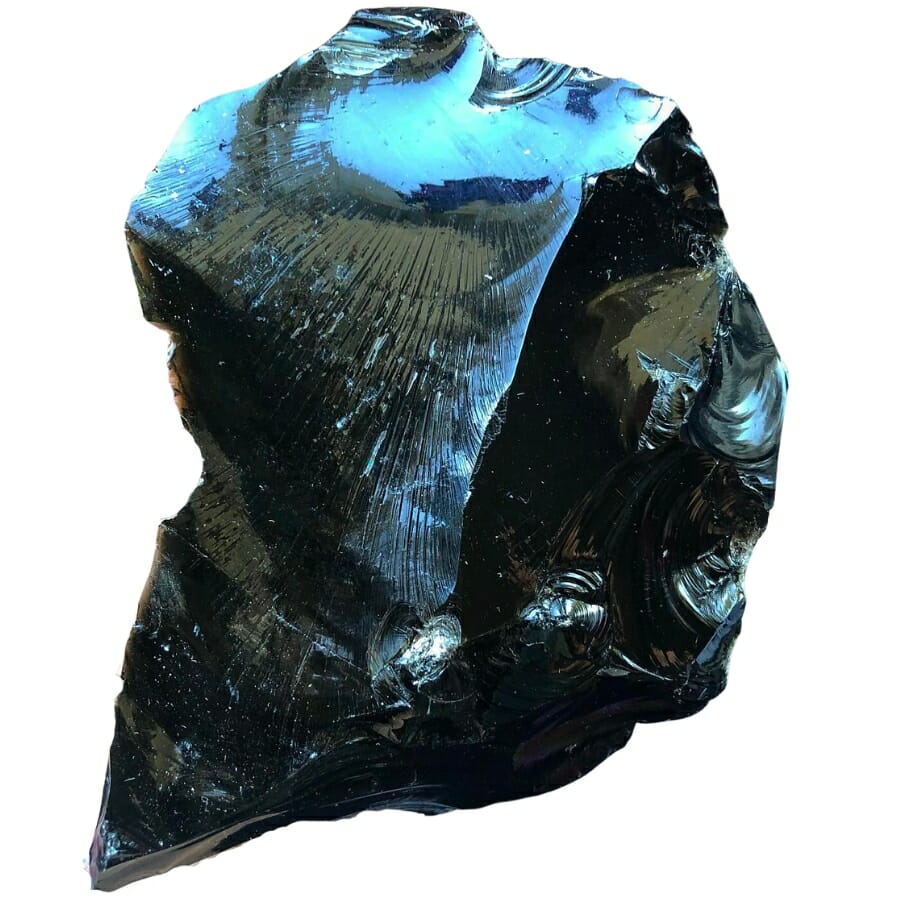
Imagine breaking a piece of chocolate. It doesn’t snap into perfect, smooth pieces, right?
But obsidian, when it breaks, has a special way of fracturing that’s called conchoidal fracturing. This means it forms really, really sharp edges, kind of like how glass breaks.
As we shared earlier, these edges can be so sharp that ancient people used them to make tools and weapons like knives and arrows.
If you find a piece of obsidian with these razor-sharp edges, it’s a big clue that it’s the real thing. Other stones might break, but they won’t have that same super sharp and smooth break that obsidian has.
Do a bubble check

Picture obsidian’s formation like a hot soup turning cold quickly when put in the fridge. When this happens, sometimes tiny air bubbles get trapped inside the cooling lava, just like how bubbles can get trapped in your soup!
Now, when you closely look at real obsidian, you might see these teeny-tiny bubbles. They’re like little clues left behind from when the obsidian was forming.
Other stones or fake obsidians won’t have these same natural bubbles. If you’re checking out a piece and spot these little bubbles, it’s a good sign that the obsidian is the real deal!
Feel if it’s cold
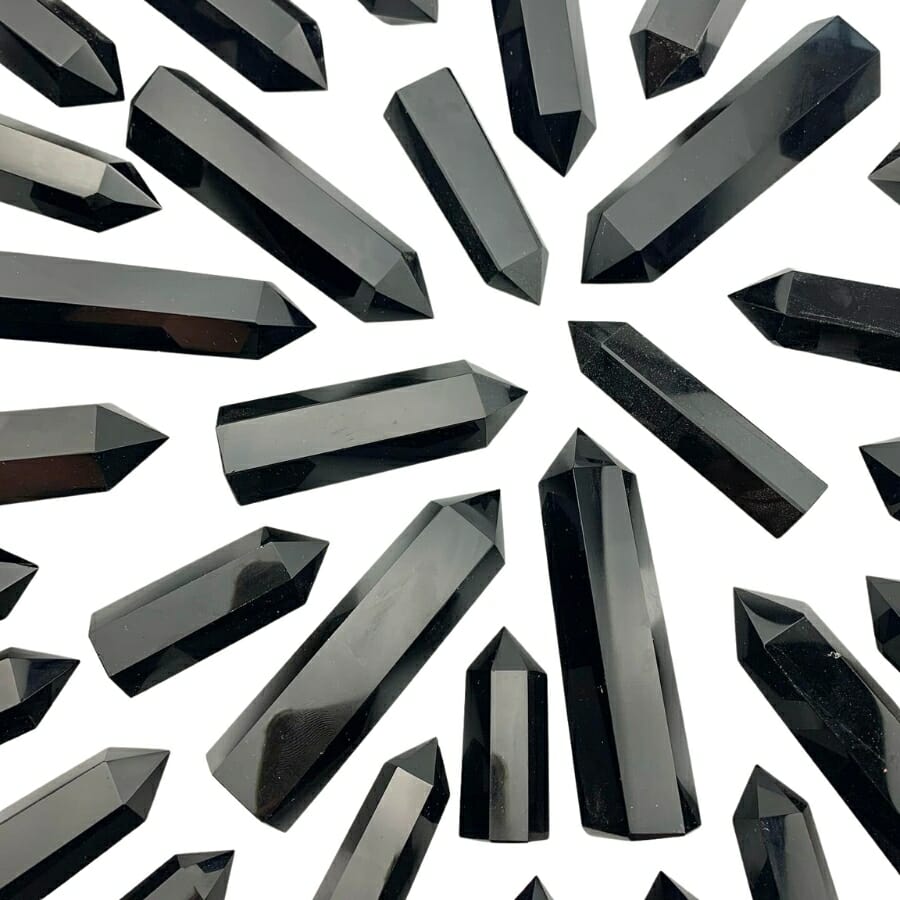
Here’s a cool (pun intended) way to check if obsidian is real: the cold touch test! Being similar to glass, obsidian is pretty good at conducting heat. That means it can pull away warmth quickly from whatever it’s touching.
If you’ve ever touched a window on a cold day, you know that glass feels extra chilly. Obsidian acts the same way.
When you pick up a genuine piece of this gem, it should feel cold to the touch, especially if it’s been sitting in a room-temperature spot.
Fake obsidians or other stones won’t have this same chilly feel. So, if you’re holding a stone and it feels surprisingly cold, that’s a good hint you’re holding real obsidian.
The Different Types Of Fake Obsidian And What They Look Like
Getting to know the different types of fake obsidian will help you get familiar with what to watch out for. These may look a lot like the real thing, but there is always a telling sign that they’re not natural obsidians.
As we share with you what these are, we’ll also discuss how you can distinguish it from a real obsidian:
Black Glass
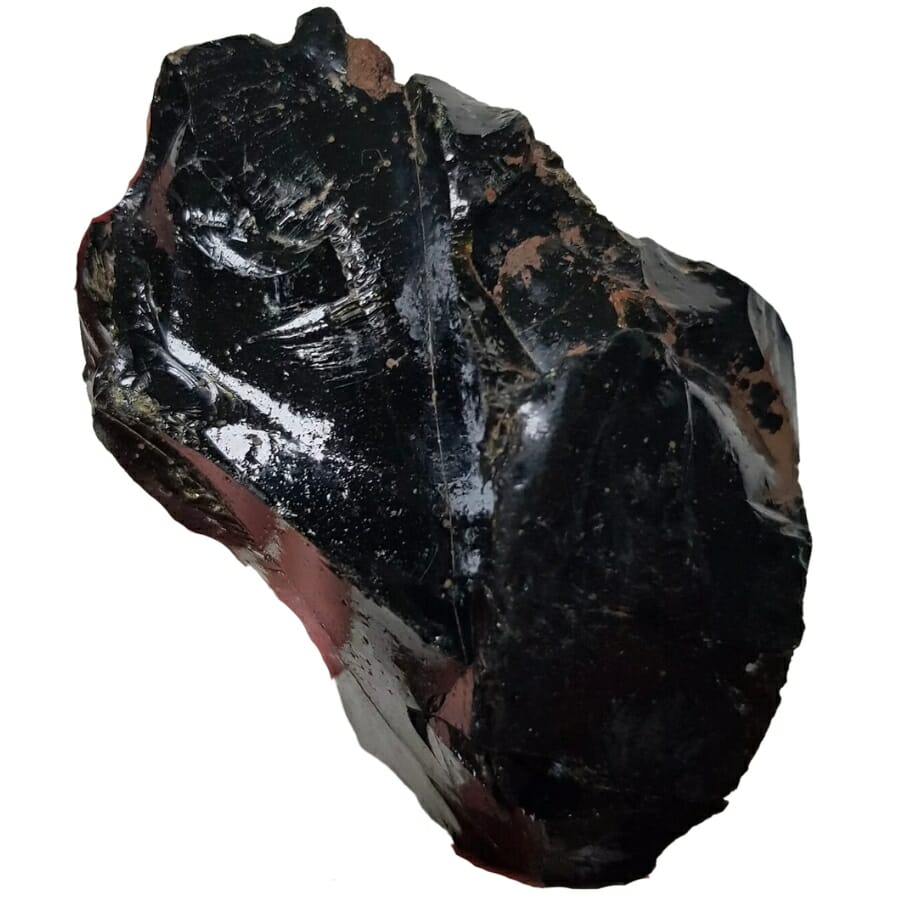
Black glass is just what it sounds like— glass that is colored black. But how do they make it black?
Making glass involves melting down materials like sand, soda ash, and limestone in a super-hot furnace. To turn this glass black, certain minerals or chemicals are added to the mix, like iron oxide or even bits of old, ground-up glass that’s already black.
Once they’ve got the black glass melted and mixed, they then cool and shape it. This cooling process can make the glass look and feel a lot like obsidian because both are smooth and shiny.
Some sellers, hoping to make a quick buck, will sell this black glass as obsidian. They might shape it into beads, jewelry, or other items and market it as the real deal.
And because they look so alike, it’s easy for someone who doesn’t know better to get tricked. But now that you know the secrets of black glass, you’ll be a step ahead and less likely to be fooled!
How you can identify black glass being sold as real obsidian
Check for bigger bubbles
When glass is made, air bubbles often get trapped inside. If you look closely at a piece that has a lot of these bubbles, it might be black glass. Real obsidian can have bubbles, but they’re usually super tiny.
Feel the temperature
Remember how obsidian feels cold to the touch? Black glass won’t get cold as fast as real obsidian. If you touch it and it feels more like room temperature, be suspicious!
Examine its shine
Both obsidian and black glass are shiny, but sometimes black glass can have a more polished or super glossy look. Real obsidian has a deep, rich shine, while black glass might look a bit more superficial.
Onyx
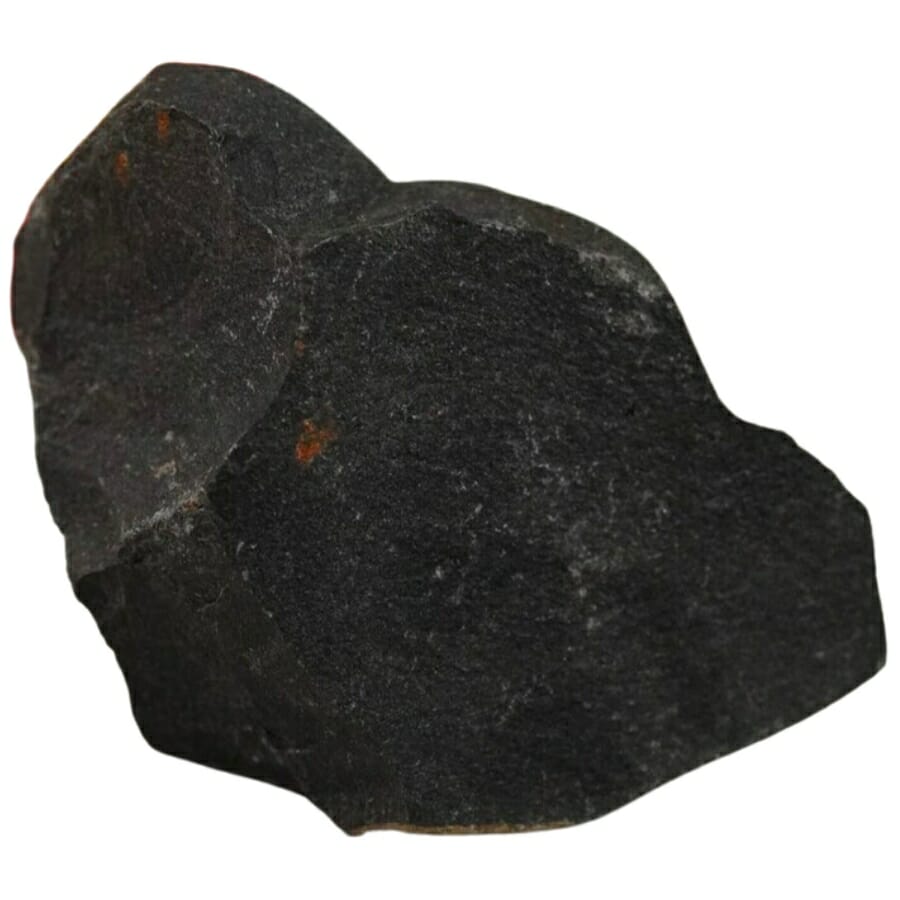
Onyx is a type of chalcedony, a family of minerals that includes things like agate and jasper. It forms in layers in cavities of volcanic rocks. Over time, liquids filled with minerals drip into these spaces.
As these liquids start to cool and turn solid, they create bands or layers of crystals. Picture it like how a layered cake is made, one layer at a time. The cool thing about onyx is that its bands are often black, which is why it can look a lot like obsidian.
But here’s a neat difference: while obsidian is smooth and glassy because it’s formed from fast-cooling lava, onyx has a more crystalline structure since it forms slowly, layer by layer.
But because black onyx can look so much like obsidian, sometimes people try to sell it as if it’s obsidian. They might carve it into jewelry, beads, or statues. Now that you know the difference between obsidian and onyx, you shouldn’t have this problem.
How you can identify onyx being sold as real obsidian
Check for banding
One of the biggest giveaways for onyx is its banding. It has these cool layers or bands, kind of like a cake, which can often be seen when you look at the stone closely. Obsidian doesn’t have these bands. Instead, it’s usually one solid color.
Test the hardness
Onyx and obsidian have different hardness levels. If you have a simple scratch test kit, you can try scratching the stone gently. Obsidian is softer and can be scratched by quartz, while onyx is a bit harder and won’t scratch as easily.
Feel the surface
While both onyx and obsidian are smooth, their surfaces feel different. Obsidian has a glassy feel because, well, it’s volcanic glass! Onyx, being crystalline, might not feel as glassy or smooth as obsidian.
Tourmaline
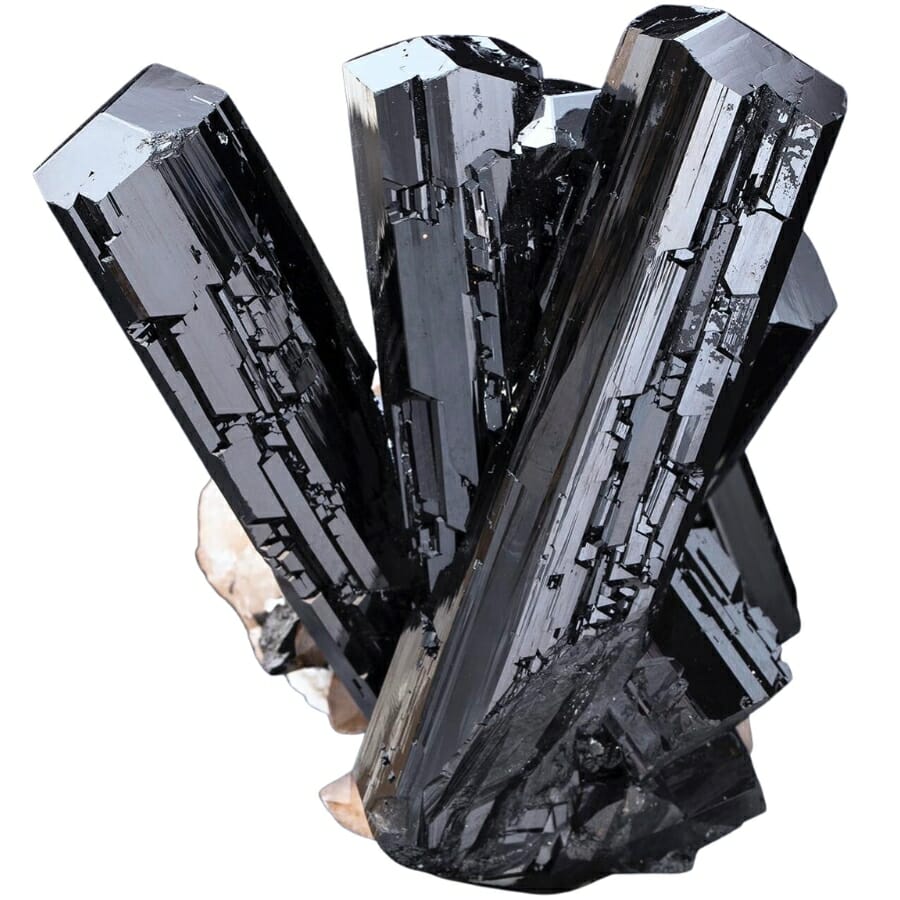
Tourmaline isn’t just one mineral; it’s a group of minerals. They can come in lots of colors, from pink to green to blue. But for this purpose, we’re focusing on the black version, called schorl, which is the most common type of tourmaline.
It forms in pegmatites or spaces deep underground filled with molten rock. As this liquid rock cools and turns solid, crystals like tourmaline start to grow. The unique thing about tourmaline is the way it forms long, slender crystals.
Now, black tourmalines can look a bit like obsidian because they’re both dark and shiny. But here’s where some folks might get tricky. They might take a piece of black tourmaline, polish it up real nice, and try to sell it as obsidian.
Why do people try to sell tourmaline as obsidian? Sometimes it’s because they think they can get more money for it. But now that you know the difference between tourmaline and obsidian, you won’t be easily fooled.
How you can identify tourmaline being sold as real obsidian
Look at the crystal’s shape closely
Tourmaline grows in long, slender crystal shapes, kind of like pencils. Obsidian doesn’t form that way. It’s more like chunky pieces because it’s volcanic glass.
Feel the texture
If you run your fingers over the stone, tourmaline, especially the black type called schorl, might feel a bit ridged or grooved because of its crystalline structure. Obsidian, on the other hand, feels super smooth and glassy.
Check for transparency
Hold the stone up to a light. Black tourmaline is usually opaque, meaning you can’t see through it. But if you notice any tiny areas that let light through, even just a little, it could be a hint it’s not obsidian.
Tektites
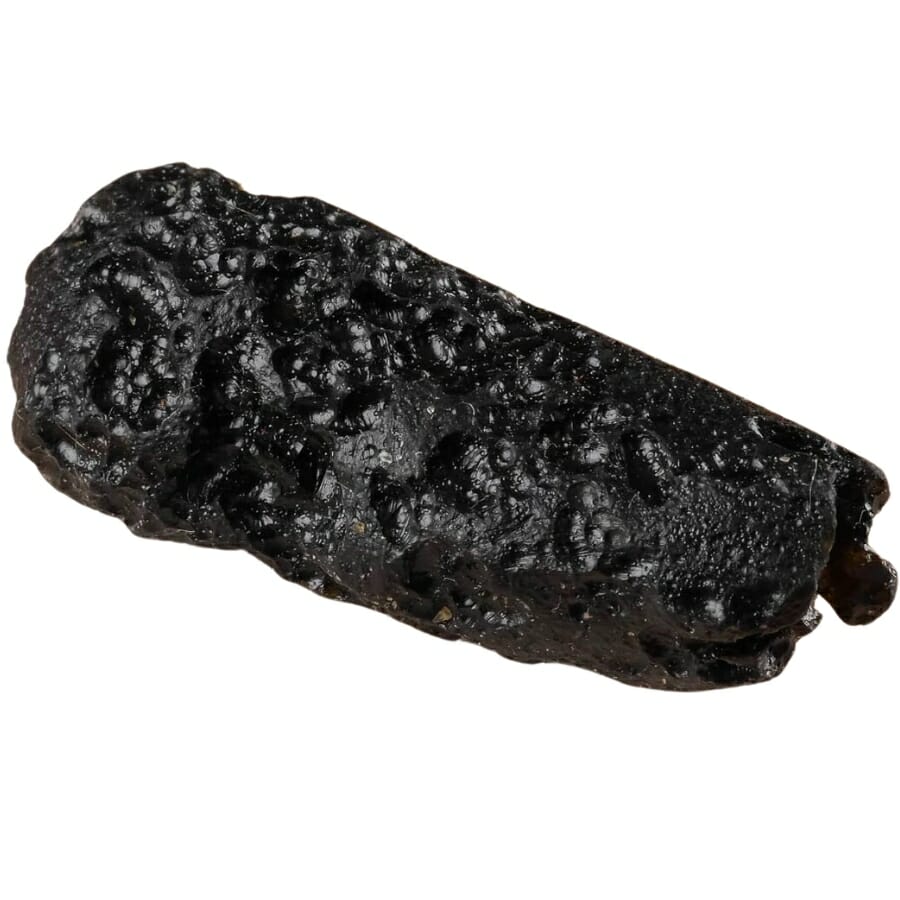
Tektites are pieces of natural glass that form when meteorites (space rocks) hit the Earth. The crash is so intense that it melts the rocks and dirt where it hits. This melted stuff gets flung into the air and cools quickly, forming tektites.
The shape of tektites can be interesting. Some look like drops or blobs, while others might look like thin discs or even rods. Their color is usually black or dark brown, but some can be green or yellowish.
Because tektites are natural glass, just like obsidian, they can look a lot alike. Sometimes people try to sell tektites as a special kind of obsidian or vice versa.
But remember, obsidian comes from volcanoes, and tektites come from meteorite impacts.
How you can identify tektites being sold as real obsidian
Observe its shape and texture
Tektites often have a “splash” form because they’re created from liquid material thrown into the air during a meteorite impact. This means they might look droplet-shaped or even like stretched-out blobs. Obsidian, coming from volcanic lava, usually has smoother and more uniform edges.
Check for surface pits
Take a close look at the surface. Tektites can have tiny pits or scars because of how quickly they cool and solidify when falling. Obsidian, on the other hand, is usually sleek and doesn’t have these marks.
Look at its thickness and structure
If you can see a cross-section or broken piece, tektites might appear layered or have varying thickness due to their rapid cooling process. Obsidian is more consistent in its structure.
Hematite
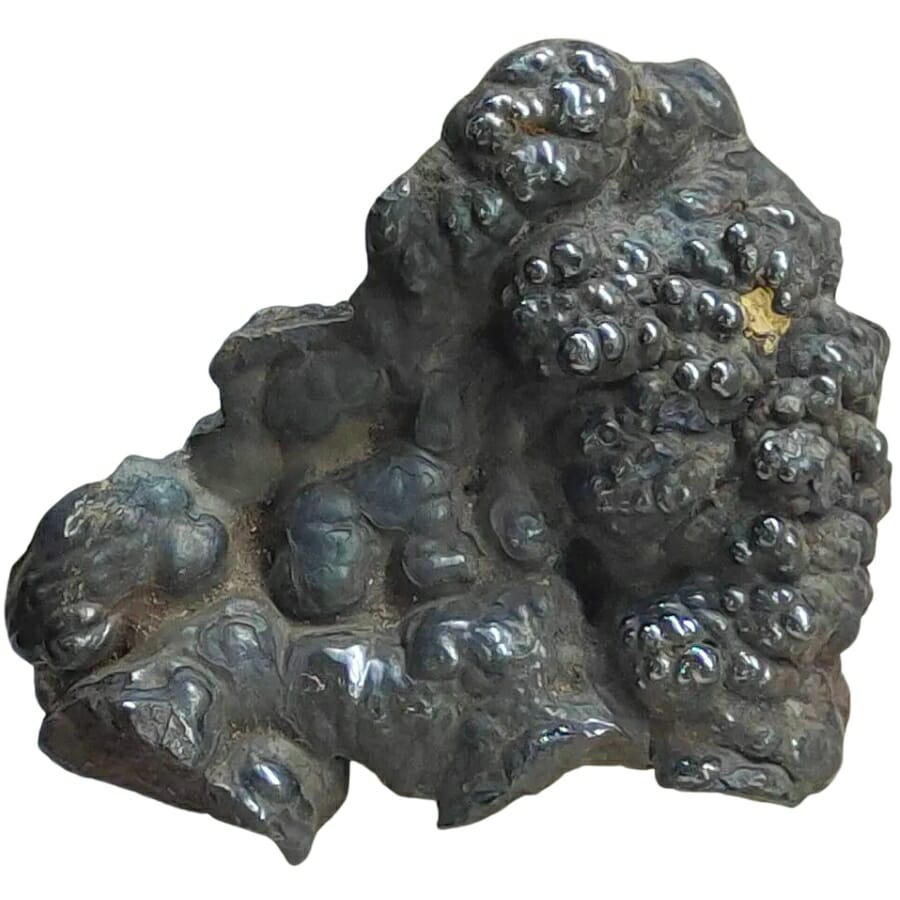
Hematite is a shiny, metallic mineral that forms when iron combines with oxygen in the environment. This process happens in areas where there used to be water, like old lakes or sea beds.
As the water goes away or dries up, the iron in the ground mixes with oxygen and turns into hematite.
Hematite is pretty dense, which means it feels heavier than it looks. It’s got this cool silvery, metallic shine and sometimes looks black or even red. When you rub it against something like porcelain, it leaves a reddish streak, almost like a crayon.
But here’s where the confusion starts. Because hematite can look shiny and black, just like obsidian, some people might think they’re the same.
Crafty sellers might polish hematite to make it super shiny and try to sell it as obsidian. They’re counting on buyers not knowing the difference.
How you can identify hematite being sold as real obsidian
Check its weight
Hematite is a heavy mineral for its size. If you pick up a stone that’s being sold as obsidian, but it feels heavier than you’d expect, you might be holding hematite. Obsidian will feel lighter in comparison.
Look for a metallic shine
Hematite has a metallic luster, meaning it shines like metal does. If your “obsidian” stone has a shiny, metallic glint, especially under bright light, that’s a big hint it’s actually hematite.
Do a streak test
If you rub hematite against a harder surface, like porcelain, it’ll leave behind a reddish-brown streak. Obsidian, on the other hand, won’t leave a streak like that. This is a neat trick to separate the two.
How To Tell If Obsidian Is Real Vs Fake
If you’re worried about encountering fake obsidian and not knowing that it is, this section is for you. Here, we’ll teach you the practical ways you can identify fake obsidian, whether it’s cut and polished or raw.
How to identify fake obsidian when it’s cut or polished
In general, navigating the world of gems can be tricky, especially when polished stones can mask their true identity. This is especially true with fake obsidians. Let’s go through the different ways you can discern fake obsidian that’s cut or polished.
Glassy appearance
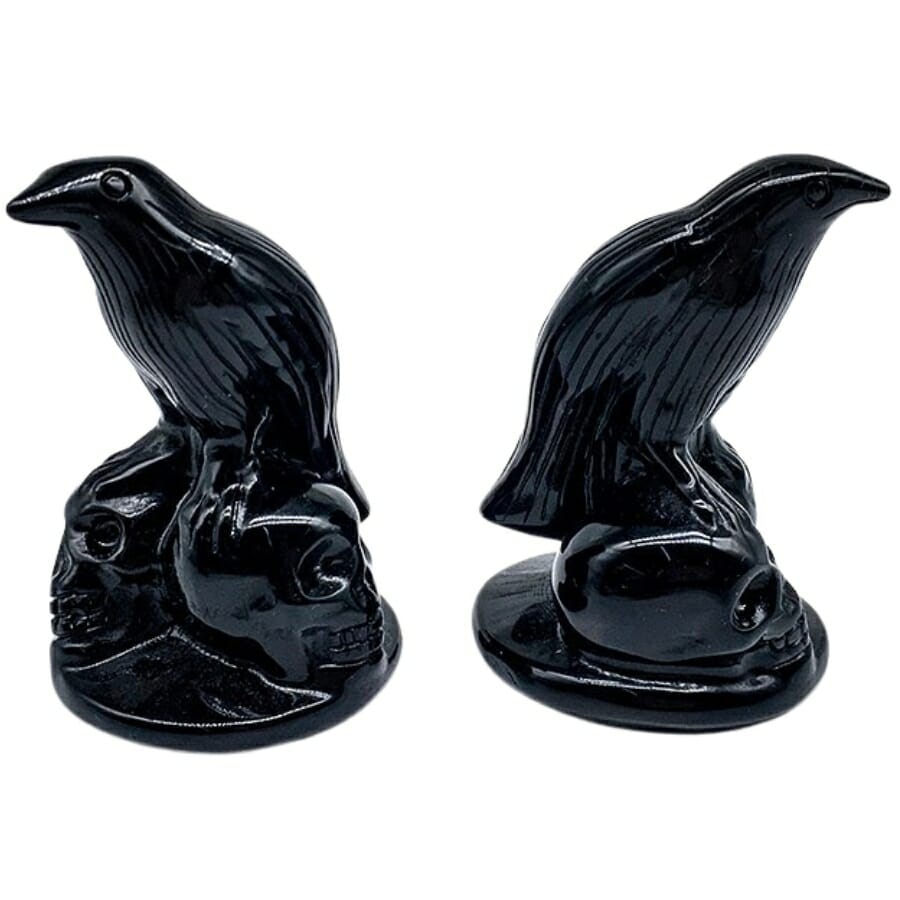
Obsidian’s formation process results in a glassy texture. When light hits obsidian, it reflects off its surface, creating a shiny, glass-like sheen. This shine is a key trait you can use to help identify genuine obsidian, especially when it’s cut and polished.
You might wonder, since obsidian and glass both have a glassy appearance, couldn’t fake obsidian just be regular glass? Here’s the catch: while both genuine obsidian and man-made glass have a glassy look, there are subtle differences between them.
Man-made glass can sometimes have a more flawless and even appearance compared to obsidian. Remember, obsidian is a product of nature, and nature rarely makes things completely perfect.
Genuine obsidian might have tiny imperfections or subtle variations in its sheen, while many fake obsidians, made from common glass, might appear too perfect or uniformly reflective.
Another hint is the thickness of the shine. Obsidian’s luster has depth, thanks to its dense volcanic makeup. Some fakes can look flat or superficially shiny without the same depth.
Consistent color
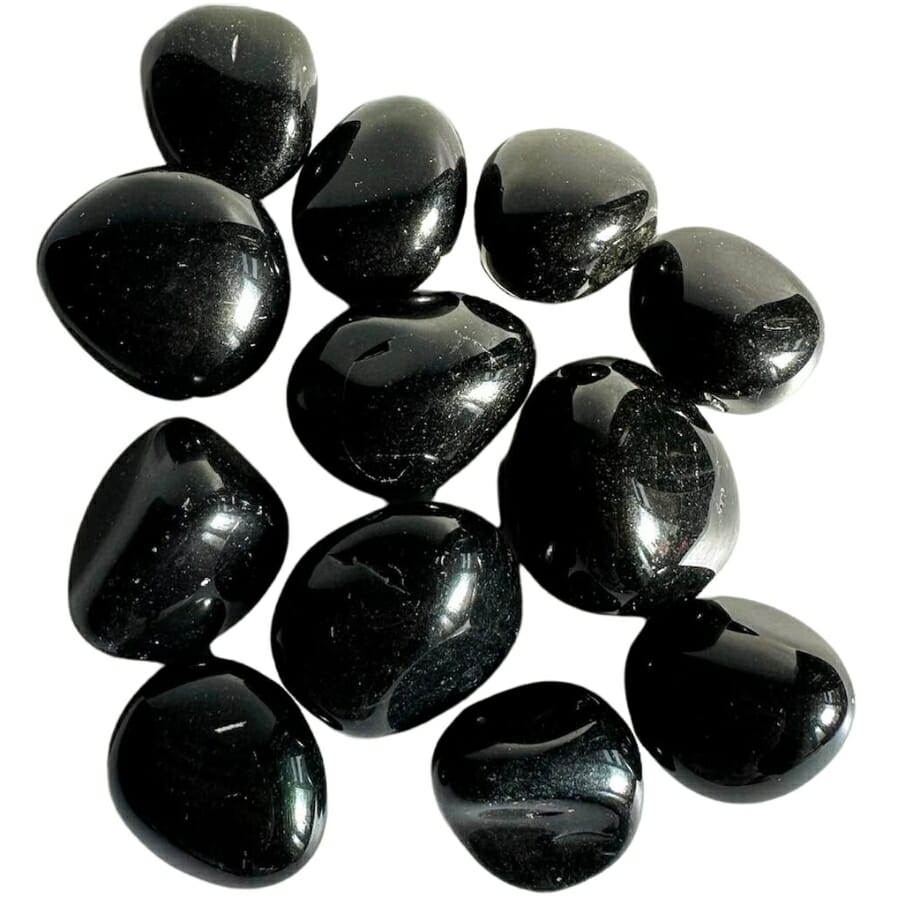
When you take a closer look at real obsidian, especially when it’s cut and polished, its color stays pretty much the same from one end to the other. This uniformity is because impurities don’t have much time to mix in during obsidian formation.
Fake obsidian pieces, especially those made from dyed materials or low-quality glass, might not have this consistent color. Instead, they might show uneven shades or areas where the dye didn’t fully penetrate.
So, if you’re examining a piece and notice patches that are lighter or different in hue, be suspicious.
Another thing to keep in mind is the depth of the color. Genuine obsidian’s color is deep and intrinsic, and not just on the surface. Some fakes, on the other hand, might appear to have a painted-on look, where the color doesn’t seem to be part of the stone’s core.
Cool to the touch
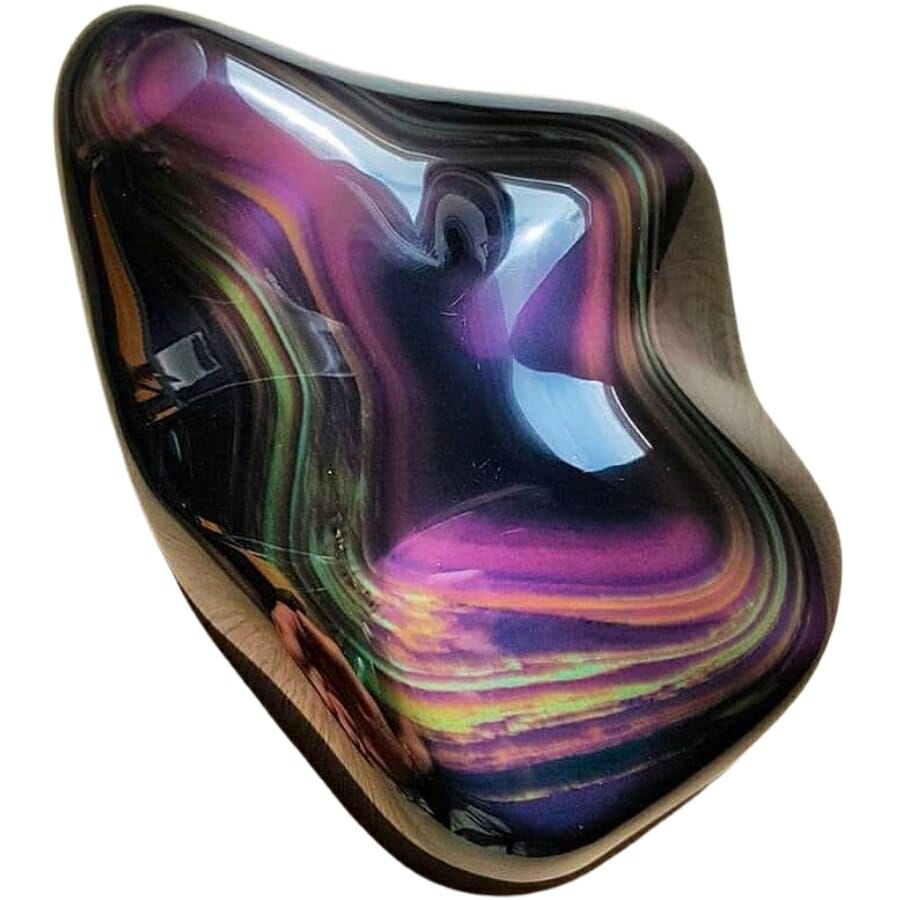
Obsidian often feels cool to the touch, even if it’s been in a warm room. This is because it has the ability to absorb and disperse heat differently than man-made materials.
So, when you pick up a piece of genuine obsidian, it might feel cooler than the surrounding environment.
If you come across a stone being sold as obsidian and it doesn’t feel cool, be cautious. Some fake obsidians won’t have this same cool feeling because these materials don’t spread heat in the same way.
Here’s a little test you can do: take the stone and place it against your cheek or the inside of your wrist, where your skin is sensitive. Genuine obsidian will often feel notably cold, while fakes might not.
Remember, though, this test isn’t foolproof. The stone’s temperature could be affected by various factors like being held in someone’s hand for a while. However, when combined with other checks, feeling the stone’s temperature can be helpful.
How to identify fake obsidian when it’s raw
Identifying genuine obsidian when it’s in its raw form can be a bit tricky, especially since many stones and imitations can look quite similar to the untrained eye.
But natural obsidian has unique characteristics and properties that distinguish it from its deceptive look-alikes, such as:
Sharp edges
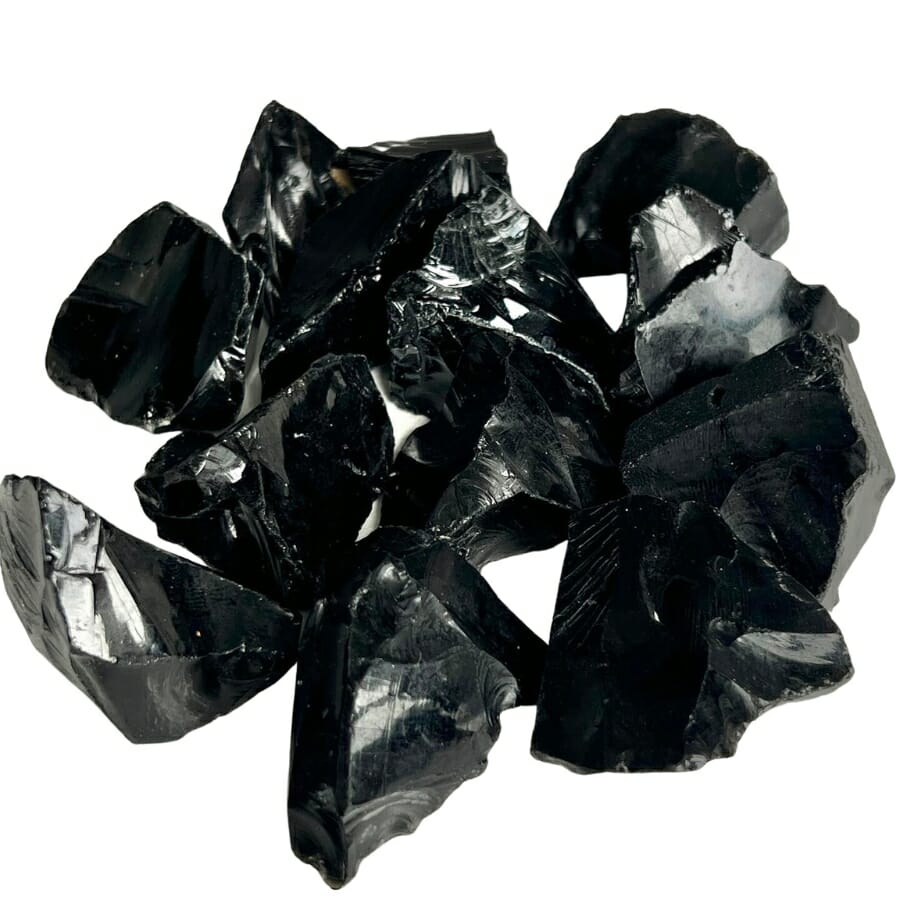
When obsidian breaks, it doesn’t just snap like a twig or crumble like a cookie. Instead, it fractures in a particular way that creates very sharp edges. This is a big reason why early humans used it to make tools and weapons.
If a raw, uncut obsidian has been broken or chipped, the edges should be super sharp, almost razor-like. This isn’t something you usually find in many other stones or fake materials trying to pass as obsidian.
But be careful because those edges can be so sharp that they can easily cut you. So, if you’re ever testing this out, handle the stone gently and avoid running your fingers along the edges.
If you find a stone claiming to be obsidian but its edges aren’t notably sharp where it’s broken or chipped, you might be dealing with a fake.
Texture and inclusions
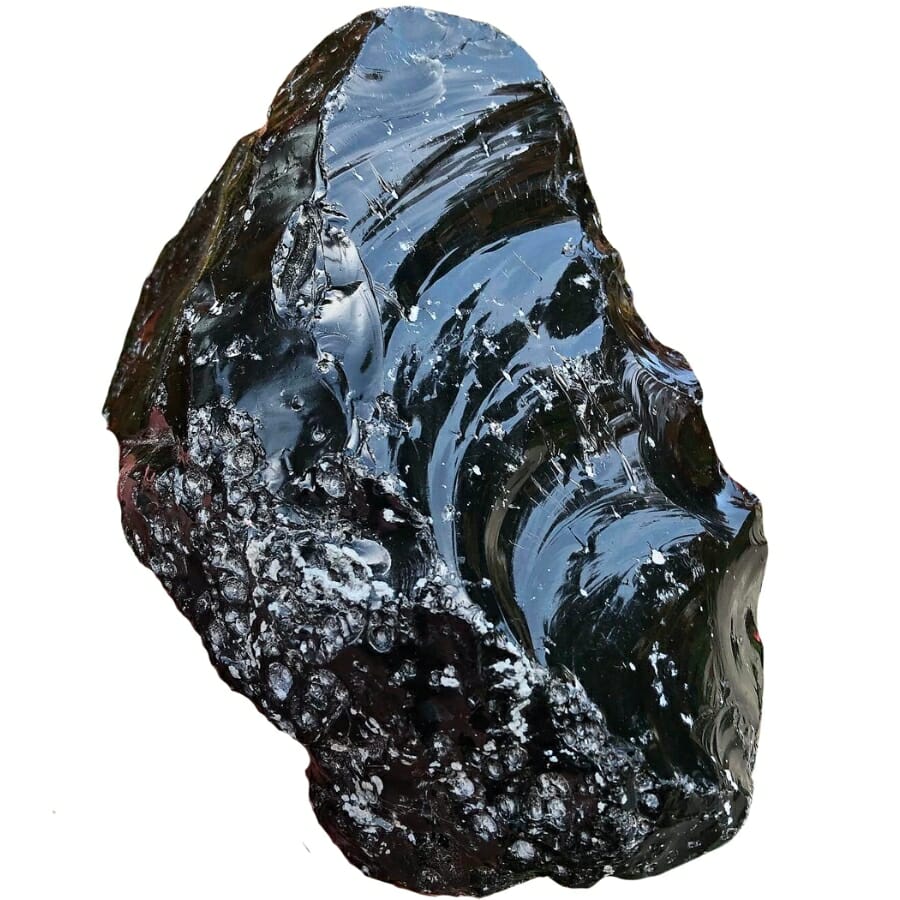
Obsidian, being a volcanic glass, has a very smooth texture. When you touch a real one, it should feel glassy and smooth, not grainy or rough. Unlike some other stones, like granite, it doesn’t have the tiny grains or bits you might feel in rocks.
Another thing to look at is what’s inside the obsidian. Sometimes, real obsidian has tiny bubbles or small mineral bits trapped inside. These inclusions can be seen when you hold the rock up to the light. However, they should be small and not too many.
Fake obsidian, especially if it’s made from certain types of man-made glass, might have lots of bubbles inside. These bubbles can be bigger and more noticeable.
Some fake obsidian might also have added sparkles or glitter to make it look more attractive, but real obsidian doesn’t sparkle that way.
Scratch test
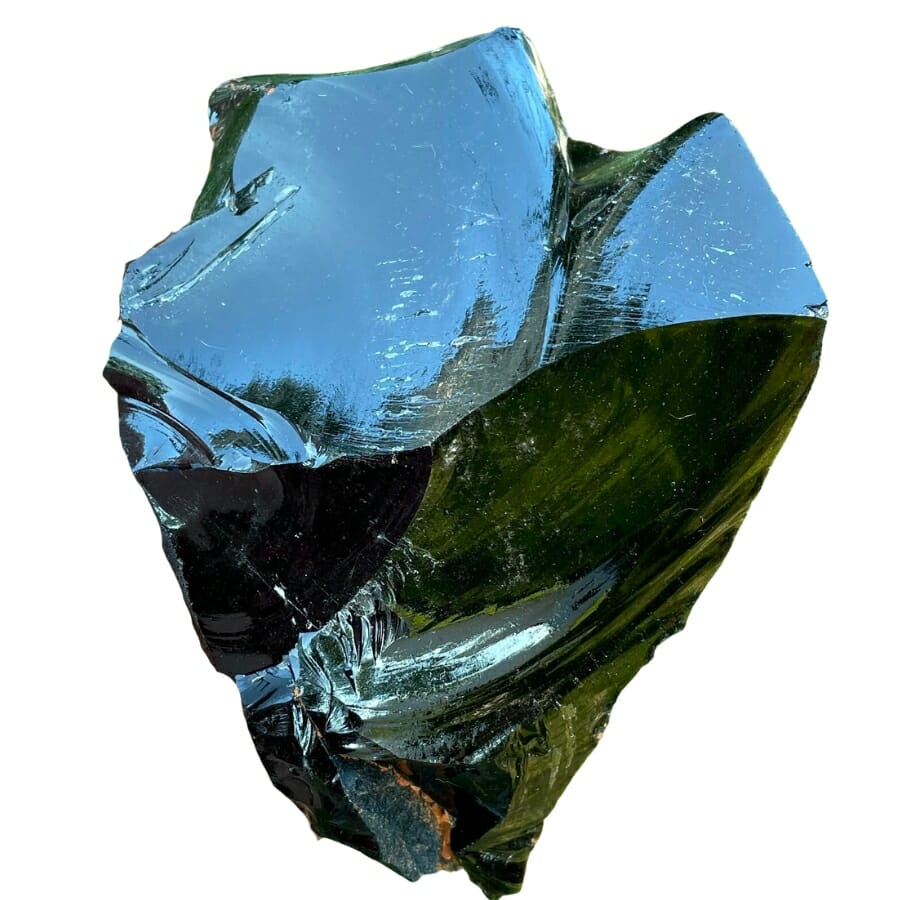
The scratch test is a simple method to check the hardness of a stone, and it can help tell if obsidian is real or fake. Real obsidian is softer than many might think. On the Mohs scale of mineral hardness, it’s usually around 5 to 5.5.
To do the scratch test, you can use a pocket knife or a steel nail. Carefully try to scratch an inconspicuous part of the stone.
If it’s genuine obsidian, the knife or nail should leave a mark or scratch. That’s because steel, which makes up the blade of most knives and nails, has a hardness of about 5.5, just a touch harder than obsidian.
Fake obsidian, on the other hand, might be made of a harder material that doesn’t scratch as easily. If you can’t leave a mark with the knife or nail, it could be a sign the stone isn’t real obsidian.


